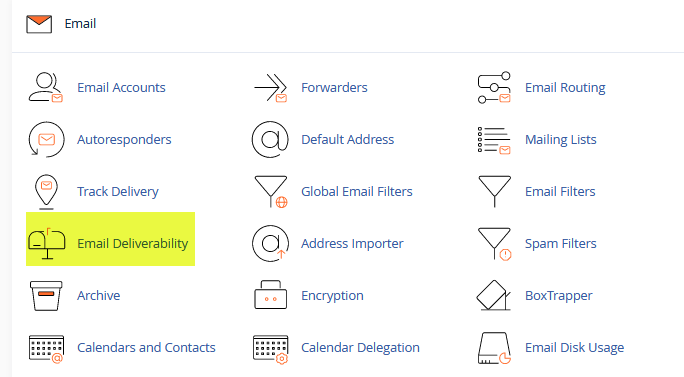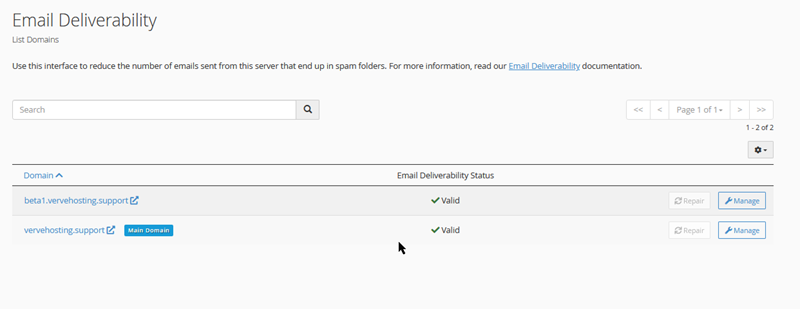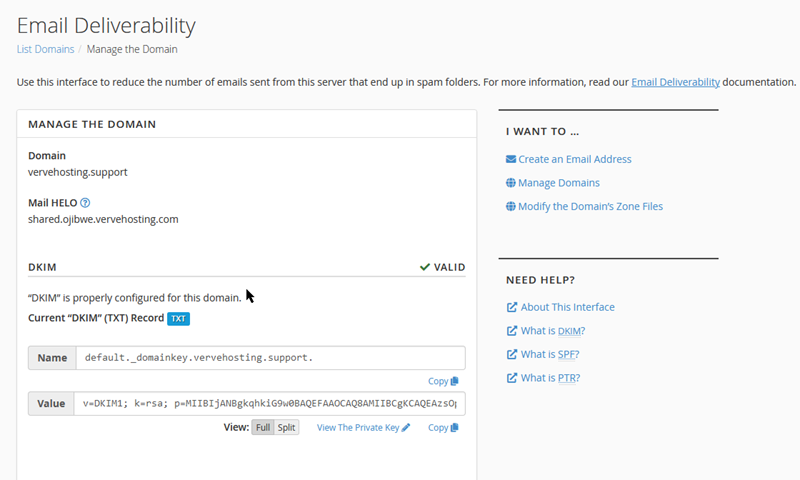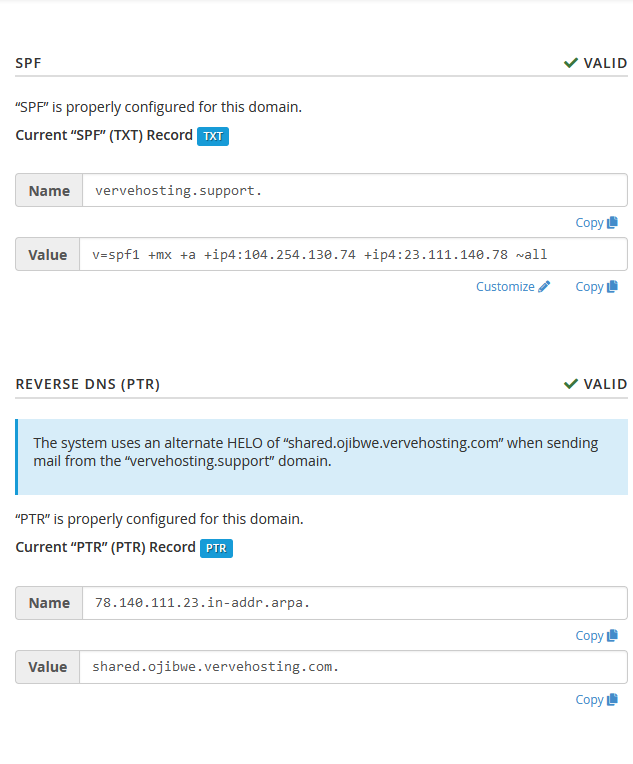This interface identifies problems with mail-related DNS records for one or more of your domains. The system uses these records to verify that other servers can trust it as a sender.


Email Deliverability table
The Email Deliverability table lists your domains, provides the status of the domains’ DNS Records, and allows you to manage those mail-related DNS records:

Manage the Domain
To access this interface, click Manage for the domain you wish to configure. The Manage the Domain interface allows you to manually configure a domain’s mail-related DNS records. Use this interface to resolve any outstanding issues with a domain’s records.
The top of this interface displays the following information:
-
Domain — The domain name.
-
Mail HELO — The domain’s HELO configuration.
Note:This information appears if the HELO configuration and domain do not match. A message about HELO configuration will also appear for the Reverse DNS (PTR) section.
DKIM
This section allows you to manage a domain’s DKIM record. DKIM verifies the sender and the integrity of a message. In addition, it allows an email system to prove that spammers did not alter an incoming message while in transit. DKIM also verifies that the messages your domains receive come from the specified domain.
If any problems exist with the current record, this section displays the properly-configured DKIM record values in the Suggested “DKIM” (TXT) Record section. It also allows you to perform the following actions:
| Generate Local DKIM Key | Generate a DKIM record, if one does not exist. |
| Copy | Copy the Name and Value records that the system provides in the Suggested “DKIM” (TXT) Record section. You can provide these records to the nameserver provider for the listed nameservers to fix it. |
| View | Modify the Value field’s displayed record:
|
| View the Private Key | Retrieve the suggested private key. The system directs you to the View the Private DKIM Key interface.
Important:
|

SPF
This section allows you to manage a domain’s SPF record. SPF verifies that the messages your domains send originated from a listed server. In addition, it provides a list of servers approved to send mail from your domains.
If any problems exist with the current record, a correct SPF record configuration will appear in the Suggested “SPF” (TXT) Record section. This section also allows you to perform the following actions:
| Feature | Description |
|---|---|
| Copy | Copy the Name and Value records that the system provides in the Suggested “SPF” (TXT) Record section. You can provide these records to the nameserver provider for the listed nameservers to fix it. |
| View | Modify the Value field’s displayed record:
|
| Customize | Modify the suggested SPF record. This directs you to the Customize an SPF Record interface. |

Customize an SPF Record
Use this interface to customize the system’s recommended SPF record for a domain. The interface displays the domain’s current SPF name and value in the Current “SPF” (TXT) Record section, if one exists, and the system’s recommendations in the Suggested “SPF” (TXT) Record section.
You can configure the following settings:
| Feature | Description |
|---|---|
| Domain Settings | This section allows you to define the hosts or MX servers allowed to send mail from your domain:
|
| IP Address Settings | This section allows you to add additional IP Address blocks to the domain’s SPF record. The system automatically includes your server’s main IPv4 or IPv6 addresses in these lists.
Note:
|
| Additional Settings | This section allows you to modify additional SPF record settings:
Note:
|
| Preview of the Updated Record | This section displays what the updated SPF record will look like, based on its current modifications. Click Install a Customized SPF Record to install the new record.
Important:
To correctly install an SPF record, your server must be the authoritative nameserver. If it is not, you can locally install this record. You must also contact your nameserver provider to update the authoritative nameserver.
|

